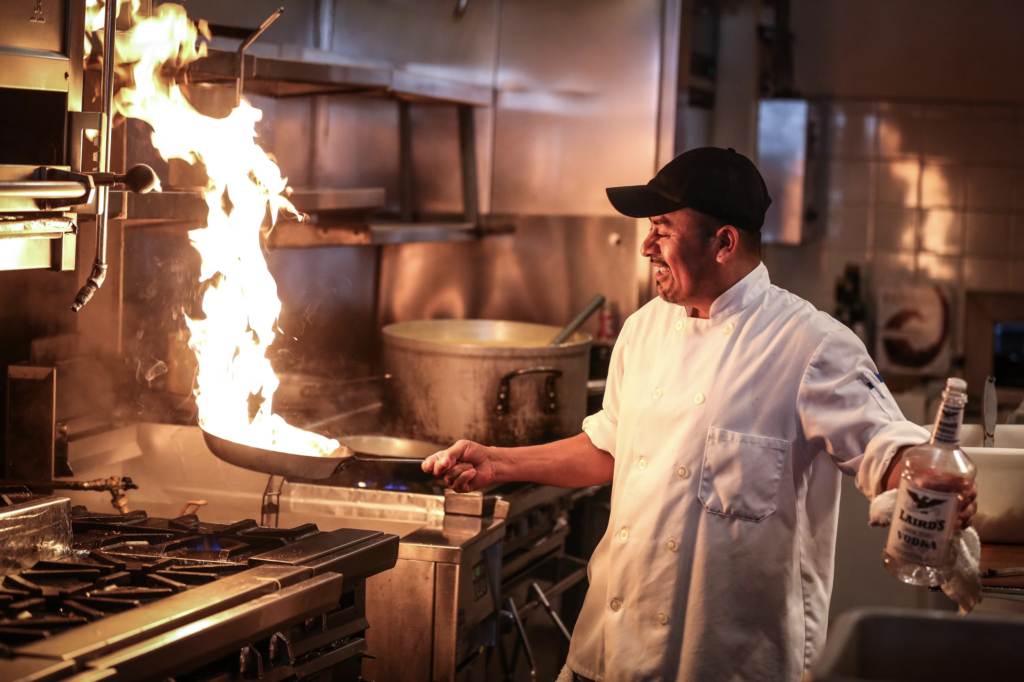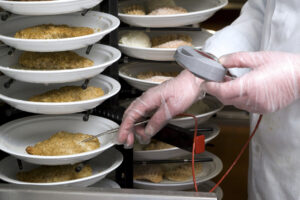On June 20, 2024, the Occupational Safety and Health Standards Board approved California Code of Regulations, Title 8, section 3396, “Heat Illness Prevention in Indoor Places of Employment.” This standard applies to most workplaces where the indoor temperature reaches 82°F, establishing required safety measures to prevent heat illness. The Office of Administrative Law (OAL) has 30 working days to review the proposal, and the regulation is set to take effect immediately after OAL approval.
Maintaining a cool and comfortable kitchen environment is crucial, not only for compliance with these new regulations but also for the well-being of your staff and the quality and safety of your food. Here are some practical tips to help you keep your kitchen cool during the hottest months of the year.
Optimize Your Kitchen Layout
One of the first steps to managing heat in the kitchen is optimizing your layout. Ensure that heat-generating equipment like ovens, grills, and fryers are placed away from prep areas and walkways. By creating designated hot and cool zones, you can minimize the overall temperature in the kitchen. Additionally, installing barriers or partitions can help contain the heat in specific areas, preventing it from spreading throughout the kitchen.
Invest in Proper Ventilation
Make sure your kitchen is equipped with high-quality exhaust hoods and fans to remove hot air and steam effectively. Regular maintenance of these systems is vital to ensure that they operate efficiently. Additionally, consider installing air conditioning units or portable coolers in strategic locations to provide extra relief during peak hours.
Implement a Heat-Resistant Uniform Policy
Outfitting your kitchen staff in lightweight, breathable uniforms make a significant difference in their comfort levels. Opt for moisture-wicking fabrics that help keep the body cool and dry. Encourage employees to wear light-colored clothing, as dark colors tend to absorb more heat. Providing non-slip, breathable footwear is also important, as it helps prevent accidents caused by sweaty feet and ensures better overall comfort. For footwear, we recommend Snibbs, by Daniel Shemtob, co-owner of The Lime Truck and Food Truck Race All Star. These shoes are temperature-controlled, non-slip, super comfortable but also cute and 100% biodegradable!
Schedule Smartly
During the hottest parts of the day, schedule lighter prep work or tasks that don’t require constant proximity to heat sources. If possible, adjust your kitchen hours to take advantage of cooler morning or evening temperatures. Stagger shifts and provide regular breaks in a cooler area to help staff recover from the heat. Ensuring that your team stays hydrated is crucial, so provide easy access to cold water and encourage frequent water breaks.
Use Energy-Efficient Equipment
Investing in energy-efficient kitchen equipment. This helps reduce your energy bills but also generates less heat. Modern, energy-efficient appliances are designed to operate more effectively and emit less heat compared to older models. Consider upgrading your equipment or incorporating induction cooking methods, which generate less ambient heat compared to traditional gas or electric ranges.
Implement Cooling Techniques
Simple cooling techniques can go a long way in keeping your kitchen environment manageable. Position fans strategically to create a cross-breeze and improve air circulation. Encourage staff to use cooling towels or bandanas that can be soaked in cold water and worn around the neck or head. Additionally, placing ice packs or frozen bottles of water near heat-sensitive areas can provide localized cooling.
Foster a Culture of Awareness and Support
Lastly, fostering a culture of awareness and support within your kitchen team is essential. Educate your staff about the signs of heat-related illnesses and encourage them to look out for one another. Implement a buddy system where team members can check in on each other and provide support when needed. Promote a supportive environment where employees feel comfortable discussing their concerns about the heat.
Conclusion
Managing summer heat in the kitchen is a multifaceted challenge, but with the right strategies, it is possible to create a comfortable and safe working environment for your staff. By optimizing your kitchen layout, investing in proper ventilation, and implementing smart scheduling and cooling techniques, you can keep your kitchen running smoothly even during the hottest months. Remember, a cool kitchen is not just about comfort—it’s about maintaining the highest standards of food quality and safety, and ensuring the well-being of your invaluable kitchen team. Stay cool and cook on! You can learn more about the Occupational Safety and Health Standards Board approved California Code of Regulations, Title 8, section 3396, “Heat Illness Prevention in Indoor Places of Employment.” here.







